A Brief History of Breguet
Breguet is an incredibly influential name in watchmaking. If you’re already in the loop, you know that their name is attached to wristwatch innovation, scientific discovery, and actual royalty. Stretching all the way back to 1775, Breguet’s history is rich with firsts and special commissions. Breguet is also known beyond the world of watchmaking. While individual years in the company’s history could evoke volumes on their own merit, today we here at Times Ticking are going to play the highlight reel—so to speak. Everything from their 1775 debut through their 20th century exploits will be sampled in this writing. So, buckle in and be ready to begin the Breguet.
18th Century Notables
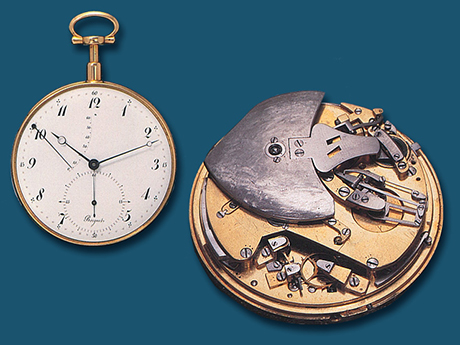
Within five years of making watches Breguet invented the first automatically wound watch (1780). This piece was referred to as the Perpétuelle and was crafted from the original design concepts of watchmaker Abraham-Louis Perrelet. While founder Abraham-Louis Breguet did not initiate the concept, his work with the original idea became a landmark in watchmaking history. From there, in 1783, another hallmark in watchmaking (and for Breguet) was created. Referred to as Breguet or Pomme (apple) hands, the company crafted a set of watch hands that contrasted with the more Baroque stylings of the era. These hands have a ring and a point on the end—with the end resembling a crescent moon or hollowed-out apple (thus “pomme”). These Breguet hands remain a part of the company’s logo and are sought after by other watch designers for their unique shape.
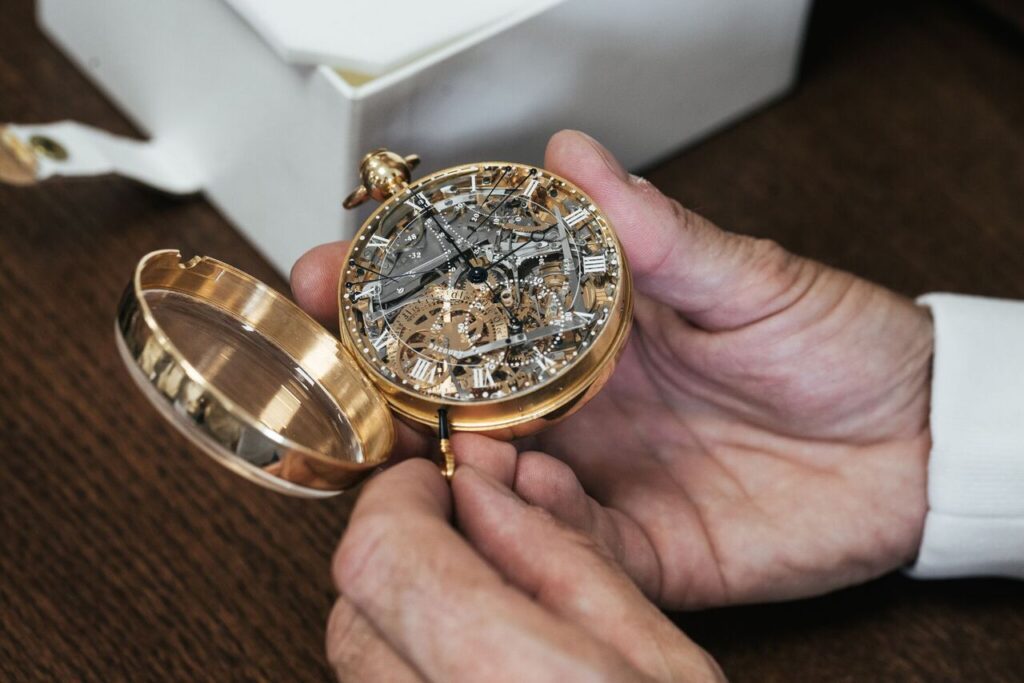
It was in 1783, as well, that Breguet introduced the Gong-spring to the watch world. This invention would lay the foundation for minute repeater watches of the 19th century. 1783—being an eventful year—also saw the initiation of what would be a 44 year project. Breguet took a commission to build a watch featuring every complication known to man (at the time), for Marie Antoinette. The project would not be complete until 1827—34 years after Antoinette’s beheading in 1793 during the first French Revolution. The 1783 project would come to be one of the most complicated watches in history. A complication movement about as fraught as a full-blown revolution (figuratively of course)—a reflection of life through the art of watchmaking.
Beyond 1783 other big moves from Breguet included implementing guilloché or lathe-machined decorations on their dial (in 1786), inventing the pare-chute shock-resistance mechanism (one of the first (in 1790)), inventing the Breguet spiral/overcoil (in 1795)—still used to this day, and selling a carriage clock to 29-year-old military general Napoleon Bonaparte (in 1798). Within the first twenty years of existing, Breguet did more for watchmaking than many companies would do for hundreds of years.
19th Century Rolls Forward
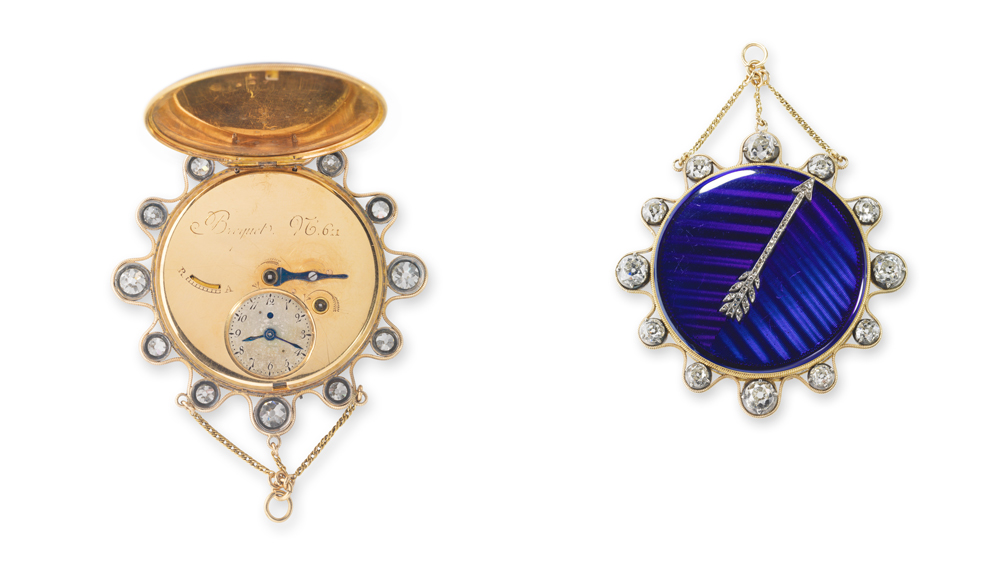
There aren’t as many notables from Breguet regarding watchmaking milestones in the 19th century—but that doesn’t mean the company stagnated. In fact, perhaps some of their greatest qualities emerged from this century. Having their name praised by professionals and public figures alike, Breguet remained a tour-de-force brand in the 1800s—a time when Swiss watch engineering was becoming internationally notorious for quality timekeeping. In terms of international appeal, the year 1800 saw Breguet selling to the first Empress of France under Napoleon Bonaparte. Empress Joséphine (or Madame Bonaparte as she was known then) purchased a tactile (touch) watch from Breguet to secretly read the time at public events. It was an elegant piece, and a unique one for the time.
Just one year later, in 1801, Breguet invented the tourbillon. This gravity defying invention is a staple in Swiss watch engineering to this very day—and will likely remain highly influential well into the future. Nearly every Swiss maison has a tourbillon movement built into their history. Each one of these brands/names/houses owes one of their largest debits to Breguet’s 1801 invention.
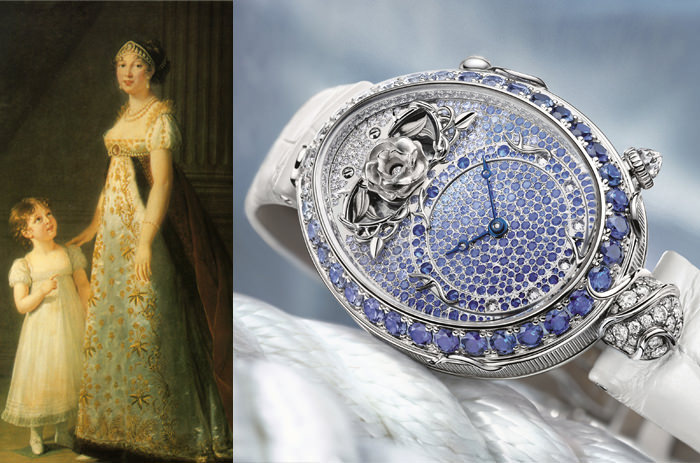
Some controversy surrounds another one of the brand’s major releases from around this same time. We are referencing the 1810 sale of the “world’s first wristwatch”. There is some debate surrounding this subject. A simple Google search will say that Patek Philippe introduced the first wristwatch in 1868, according to the Guinness World Records. However, there are records showing that Breguet’s premiere Reine de Naples—designed for the Queen of Naples in 1810—was completed in 1812. Though the piece was a real landmark in watch history it has been lost to time. Somewhere around 1855 all traces of the watch, aside from a bill of sale, were left behind. In terms of direct tangible evidence, the jury is still out—but many suggest that Breguet deserves the title of “world’s first wristwatch”. At the very least, the first one ever sold.
Moving forward, founder Abraham-Louis Breguet died in 1823. The family kept the company going and would remain involved with wristwatch engineering. They would also become highly involved in other major engineering projects throughout the 19th century. For example, in 1879 the Breguet family brought Alexander Graham Bell’s reversible telephones to France. 20 years later, in 1899, Breguet family member Louis Breguet would have his name engraved on the (brand new) Eiffel Tower. This was due to his scientific contributions to France.
20th and 21st Century Landmarks
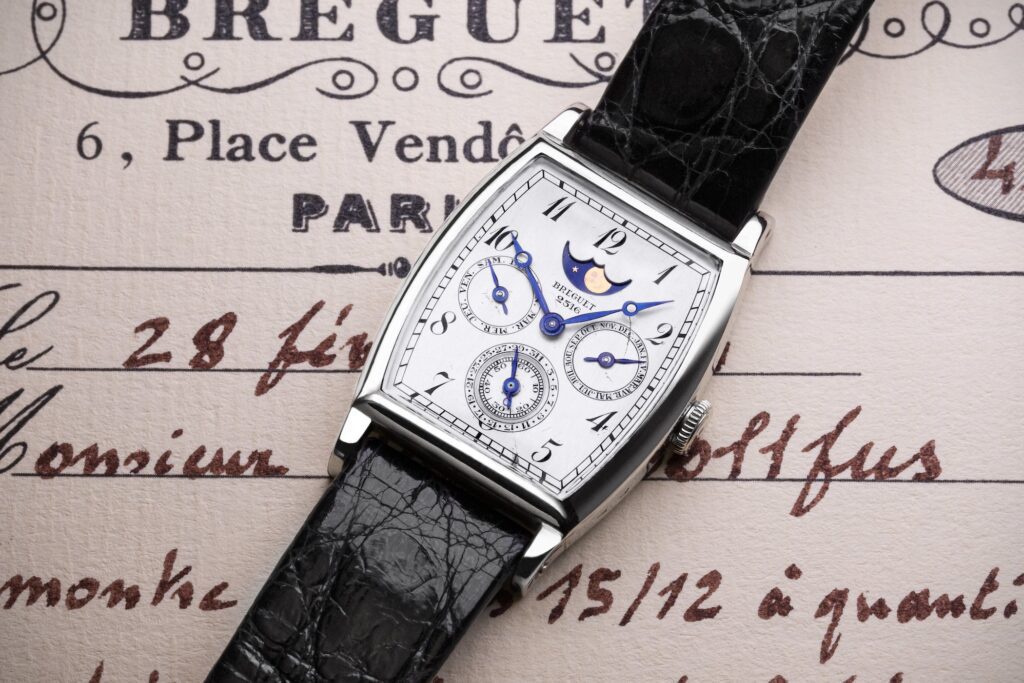
In the early 20th century the Breguet family was involved with inventing the world’s first helicopters. They were also involved with other forms of flight engineering. In 1929 they invented (at least possibly) the first perpetual calendar for wristwatches—with their Breguet No. 2516. The watch business remained profitable for Breguet beyond 1929, but war was on the horizon.
During and after WWII, Switzerland remained neutral. This reality kept the Swiss watch economy ticking during decades of conflict throughout Europe. Swiss maisons became inextricably tied to a growing international love for timekeeping during this era. After WWII, Breguet remained successful and their historical significance (leading up to that point) kept them viable on the international market. Eventually, however, they became entangled with a series of mergers that would move the family away from the name—making it more of a brand name than a mark of family-owned engineering. After the advent of Japanese quartz in the 1970s (aka the Quartz Revolution/Crisis) Breguet, alongside other Swiss brands, was consolidated to keep the entire Swiss watchmaking industry from falling apart. Thankfully the brand survived and still thrives today. Breguet is now under the valued-over-8billion-dollar umbrella of the Swatch watch group. This has been the reality behind the Breguet brand since 1999. Styles like a modern version of their Reine de Naples remain popular among modern watch wearers. What’s more, their history helps inform how nearly all modern mechanical watches function—especially Swiss tourbillon pieces. So, hats off to the history of Breguet. Their influence on early Swiss watchmaking leaves an impression that will surely flourish throughout the future of watchmaking.
Times Ticking has been in operation for more than 30 years, since 1982. We have performed watch repair for customers both locally and internationally. If it Ticks! We KNOW it! Our team of watch repair technicians have a combined experience in watchmaking of over 120 years.

